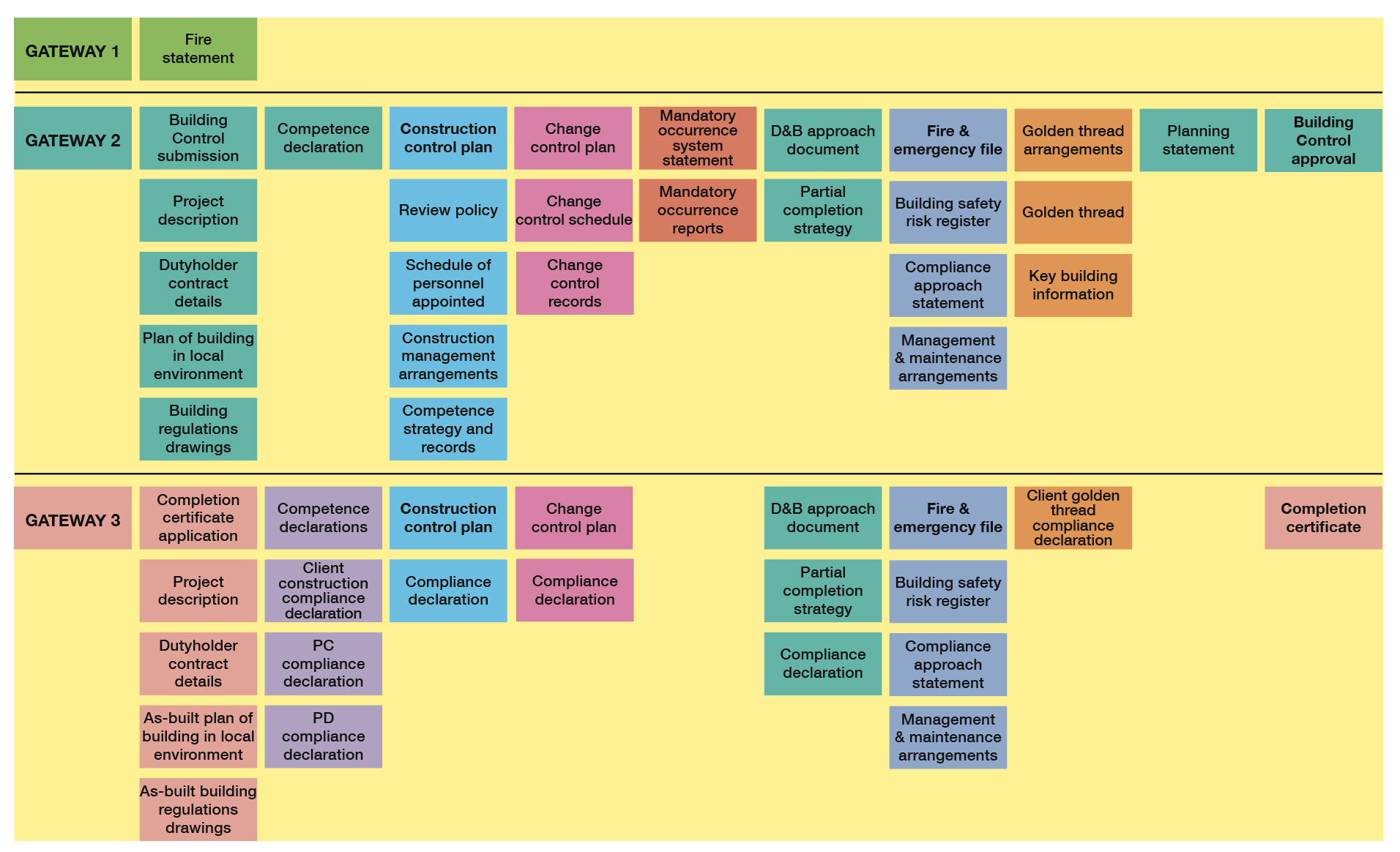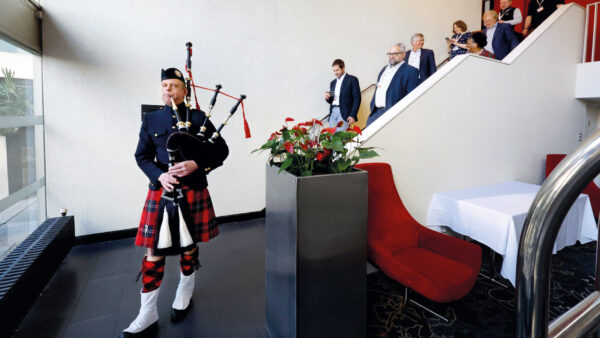
As APS members look to prepare for implementation of the Building Safety Act, and in particular the long-awaited secondary legislation, Mark Snelling looks at the duties of the new building regulation principal designer.
Section 34, ‘Dutyholders and general duties’, of the Building Safety Act 2022 (the Act) came into force on 6 April 2023. The Act modifies Schedule 1 to the Building Act 1984 and enables duties to be imposed on relevant persons in connection with the planning or management of the building work (work to which the building regulations apply).
The government consulted on these requirements last year. Its proposals suggest that the new dutyholders required in relation to compliance with the building regulations will mirror the dutyholder structure of the Construction (Design and Management) Regulations 2015 but be entirely separate from it.
It is proposed that the building regulations will be revised to impose new duties on those who commission, design and undertake building work to which building regulations apply. The regulations will set out who the dutyholders are and impose duties on them.
The dutyholders will be:
- client;
- principal designer;
- designers;
- principal contractor; and
- contractors.
It is proposed that, where the role of principal designer or principal contractor is carried out by an organisation, reasonable steps must be taken to ensure that the individual or individuals designated, who are fulfilling the functions for a specific project, have the appropriate skills, knowledge, experience and behaviours (SKEB).
The competency standards for an individual principal designer will be largely the same as a designated individual appointed by an organisational principal designer.
Competence and capability
It is proposed that any person carrying out any building work or any design work must have, where the person is an individual, the skills, knowledge, experience and behaviours necessary, or, where the person is not an individual, the organisational capability, to carry out:
- the building work in accordance with all relevant requirements;
- the design work so that, if built, the building work to which the design relates would be in accordance with all relevant requirements; and
- to fulfil their duties under the regulations in relation to the work.
It is also proposed that a person who is responsible for appointing a designer or contractor to carry out any building work or any design work must take all reasonable steps to satisfy themself that any person they wish to appoint has the necessary SKEB, and any organisation has the necessary organisational capability.
Principal designer
It is proposed that the key role during the design phase is the principal designer, who will be a designer appointed to be in control of all the design work. They can be an individual or an organisation and possess the necessary SKEB.
It is proposed that the principal designer will need to be involved with a number of activities. These include the need to:
- plan, manage and monitor the design work, ensuring that the design, if built, would comply with the relevant requirements of the building regulations;
- coordinate matters relating to the design work to ensure that, if built, the building work to which that design relates will comply with the relevant requirements of building regulations;
- ensure that they, and the designers in the team, cooperate, communicate and coordinate their work with the client, the principal contractor and other designers;
- liaise with the principal contractor and share information relevant to the building work; and
- assist the client in providing information to other designers and contractors.
Plan, manage and monitor
To be able to plan, manage and monitor compliance with the relevant requirements of the building regulations a principal designer will need have an understanding of the building regulation application and approval process.
This requires understanding of:
- the types of notification available (Regulation 12);
- the applicability of use of a building notice under Regulation 13;
- the applicability of use of a full plans notice under Regulation 14;
- the requirements for inspection of work (Regulation 16);
- the completion certificate process (Regulation 17);
- regularisation of building work that has been carried out without Building Control involvement (Regulation 18); and
- the requirements for the provision of fire safety information (Regulation 38).
The principal designer will also need to understand the requirements of the dutyholder and competence requirements of the – as yet unpublished – secondary legislation facilitated by Section 34, ‘Dutyholders and general duties’ and Section 35, ‘Industry competence’, of the Act. Ensuring all designers have the necessary skills, knowledge, experience and behaviours will be central to ensuring compliance with the building regulations.
Those who wish to work on higher-risk buildings will also need to understand the gateway process and the golden thread requirements.
Approved documents
Approved documents are approved by the Secretary of State and give practical but prescriptive guidance on common building situations about how to meet the functional requirements of the Building Regulations 2010 for England.
Different approved documents give guidance on each of the technical parts of the regulations. There are currently 23 approved documents, which cover various elements and required performance from structure to ventilation.
Gateway submission documents
Understanding the process for higher-risk buildings

Complying with the guidance in the approved documents does not guarantee that building work complies with the requirements of the regulations – the approved documents cannot cover all circumstances.
Those responsible for building work must consider whether following the guidance in the approved documents is appropriate and likely to meet the requirements in the particular circumstances of their case.
There are also other ways to comply with the requirements on Schedule 1 (www.legislation.gov.uk/uksi/2010/2214/schedule/1), other than the methods described in an approved document, such as compliance with a relevant British Standard.
BS 9999:2017 Fire safety in the design, management and use of buildings or BS 9991:2015 Fire safety in the design, management and use of residential buildings can, for example, be used in fire safety design in order to satisfy functional requirements of Parts B1 to B5 in Part B of the building regulations.
Fire engineering principles can be applied to support alternative solutions where adherence to the prescriptive guidance provided by Approved Document B may conflict with the wider aspirations for the scheme through the application of BS 7974:2019 Application of fire safety engineering principles to the design of buildings and its Published Documents Parts 1-7.
In certain circumstances compliance with specified standards can provide an alternative route to compliance. There are over 600 codes and standards referenced in the approved codes of practice. Approved Document B, Fire Safety, alone refers to over 80 codes and standards.
Measuring and demonstrating competence
In response to the competence shortcomings identified by the Independent Review of Building Regulations and Fire Safety conducted by Dame Judith Hackitt in Building a Safer Future, the Department for Levelling Up, Housing & Communities (DLUHC) sponsored the development of three new standards which set out competence requirements for building safety management including principal designers and principal contractors.
The Building Safety Regulator, which will oversee the enforcement of the Building Safety Act and its secondary regulations in relation to building regulation compliance, has made it clear that it will use these standards to determine whether dutyholders have the relevant skills, knowledge experience and behaviours (competence) to deliver the role on the project on which they have been engaged.
PAS 8671:2022 standard
The competence standard for building regulation principal designers is PAS 8671:2022
Built environment – Framework for competence of individual Principal Designers – Specification.
PAS 8671 addresses competence thresholds that individuals are expected to meet when managing the dutyholder functions of the principal designer building regulations role. It also specifies the minimum competence thresholds needed by principal designers and the additional requirements for working on higher-risk buildings (HRBs).
It should be noted that PAS 8671 does not cover the duties of principal
designers under the Construction (Design and Management) Regulations 2015 (CDM).
The principal designer dutyholders’ areas of competence are:
- appropriate behaviour;
- knowledge of legislative and regulatory framework for compliance;
- management of design work compliance; and
- awareness of technical framework for compliance.
Appropriate behaviour includes refusing to carry out work which is beyond their skills, knowledge or experience.
Principal designer competence
PAS 8671 states that the focus of the principal designer dutyholder role is on design work compliance. In the PAS, the individual managing the dutyholder functions, either a designated individual or an individual principal designer, is referred to as a principal designer because the competency standards for both a designated individual or an individual principal designer will be largely the same.
The following is taken from Section 4 – ‘Minimum competences for the principal designer dutyholder role’, PAS 8671, which makes it explicit that those undertaking this role have deep understanding and technical design knowledge. It says:
Principal designers are required to plan, manage, monitor, and coordinate the design work for design work compliance – ie, compliance with relevant requirements.
It is not sufficient, however, for fulfilling the principal designer dutyholder role to be a box-ticking exercise to record designers’ claims of compliance. Instead, principal designers should appraise and challenge design work in a way that helps designers to reach consensus on compliance.
Breadth of knowledge
Principal designers should have a sufficient breadth of knowledge to critically assess relevant requirements so that they can make informed decisions, ask intelligent questions, understand when they need to bring in expert help, and coordinate overall action based on their findings.
In managing the process of design work compliance and liaising with the principal contractor (ie, the new principal contractor dutyholder role introduced by secondary legislation under the BSA), principal designers should understand how consensus on compliance is reached, and how risks to compliance arise. They should have an extensive grounding in the relevant legal and technical frameworks, and understand how information about compliance should be managed.
Principal designers should have the competence (and, if relevant, organisational principal designers should have the organisational capability) to address any project-specific gaps in their own ability or capacity to manage the dutyholder functions, and to call in help when needed.
While this suggests that persons in the principal designer dutyholder role should understand buildings as systems and have control of the design work, there are likely to be instances where it is reasonable for other types of designers to fulfil the dutyholder role.
Minimum competence requirements
To meet the minimum competence requirements of the PAS, principal designers must be able to:
- apply the legislative and regulatory framework related to how designers and design work meet legal requirements;
- apply general principles of management to plan design work compliance, and to manage, monitor and coordinate designers and design work in relation to compliance during the design phase;
- understand general principles of building design, general principles of construction and the ‘core criteria for building safety’ set out in BSI Flex 8670 sufficient to: appraise designers’ evidence of design work compliance; manage the process for designers to achieve consensus that coordinated design work complies with relevant requirements; and appraise principal contractors’ comments affecting design work compliance.
The role requires more than being able to read the regulations, standards and codes. You need to know what they mean so that you can deliver the role of principal designer and in particular ensure that the design, if built, would comply with building regulations. These attributes come with experience.
Are you competent?
If you can demonstrate through evidence that you can achieve the standards set out in PAS 8671 in relation to the projects you wish to work on, you are likely to be competent.
Knowing all the requirements of the regulations, approved codes, standards and codes is not necessary, but you do need to be able to find the standard that applies to the task in hand, or at least know that it is the right standard when it is presented to you by a designer. You also need to be able to understand what the regulation, approved code etc means and requires.
You also need the interpersonal and management skills to manage a team of designers and interface with both clients and the principal contractors.
Being competent requires more than attending the right courses. You need to be able to provide evidence that you can deliver the role. Perhaps the best way of determining whether you have what it takes is to compile a portfolio of evidence that you can comply with the requirements of PAS 8671. l
Mark Snelling is president elect of APS and managing director of Safetymark Consultancy Services.
This article is an abridged version of Briefing Note 3 prepared by Mark Snelling which is available in the members’ area of the APS website: www.aps.org.uk/guidance/aps-briefing-notes.












